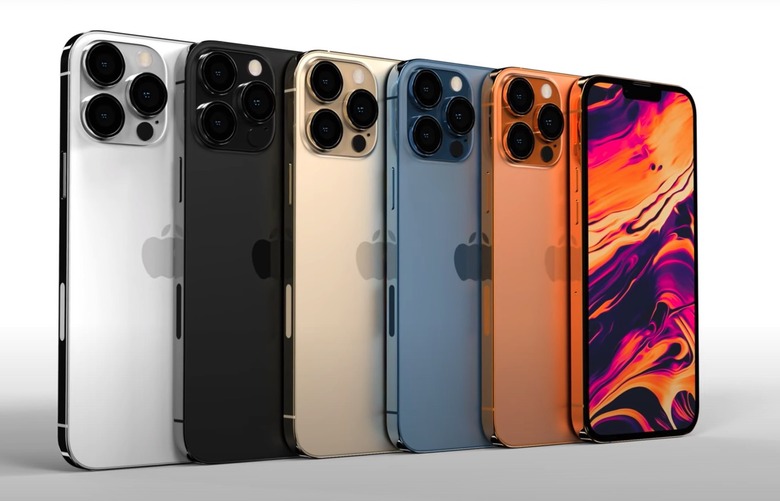This New iPhone 13 Leak Is Terrific News For Apple Fans
A series of reports said earlier this week that several companies in Apple's iPhone supply chain have started manufacturing parts for the iPhone 13 series. Among them is well-known chipmaker TSMC that manufactures the A-series and M-series chips for the iPhone, iPad, and Mac. Those reports seemed to suggest that Apple is looking to launch the iPhone 13 handsets on time this year, despite the ongoing pandemic and chip shortage. Still, the reports said there are no guarantees that Apple will launch the iPhone 13 phones during the usual September timeframe. Apple unveiled the iPhone 12 phones in mid-October, about a month later than usual, and the handsets hit stores in two waves in late October and early November. Manufacturing issues and travel delays are the oft-cited reasons that reportedly forced Apple to postpone its iPhone 12 launch event and release dates.
A new report from Korea says that Samsung and LG have independently begun producing a key component that will be found in all iPhone 13 models, the OLED screen. But it's Samsung that's reportedly tasked with making the most exciting iPhone 13 component this year, and the company has now reportedly begun to manufacture this crucial component for Apple. This is a huge indication that the iPhone 13 will be released on time in September this year, and it's definitely the news we've been waiting to hear.
The iPhone 13 phones will be almost identical to current iPhone 12 models, various leaks have claimed. We're looking at the same height and width dimensions for all iPhone 13 models compared to their respective predecessors, but the new versions will be slightly thicker. The notch will be narrower, and the rear camera modules will take up more space since they're all rumored to feature a larger sensor — the sensor-shift camera found on the iPhone 12 Pro Max.
All four iPhone 13 handsets will have OLED panels, just like their predecessors. These are the components that Samsung and LG have started manufacturing earlier than usual. But Samsung will make the OLED screens inside the iPhone 13 Pro models, which will support dynamic refresh rates of up to 120Hz.
Apple has long been rumored to bring the 120Hz ProMotion tech it uses on the iPad Pro to the iPhone, as most Android flagships feature high refresh rate displays. Some iPhone 12 models were supposed to feature 120Hz displays, but Apple scrapped the feature because the screen consumed too much power. At least that's what rumors said last year.
This year's rumors say the iPhone 13 Pro and Pro Max will feature LTPO OLED panels, which offer support for a dynamic refresh rate. That means the refresh rate will vary depending on what's shown on the screen to conserve battery life. Korean website The Elec, which reported that Samsung and LG have kicked off iPhone 13 OLED production, also mentions LTPO screens:
Samsung is the sole supplier of low-temperature polycrystalline oxide (LTPO) thin-film transistor (TFT) OLED panels, which supports 120Hz refresh rate. Apple is planning to use LTPO TFT OLED for the two top tier models. LG Display will be supplying low-temperature polycrystalline silicon (LTPS) TFT OLED panel for the two lower tier models.
The report says that Samsung will provide between 120 million and 130 million OLED panels to Apple for models including iPhone 12, iPhone 13, and other models. LG will provide up to 50 million OLED panels to Apple. The report notes that production has started a month earlier than the iPhone 12 last year at Samsung and LG at Apple's request. Sources said to be familiar with the matter told the Korean paper that Apple is looking to avoid another iPhone launch delay by securing key components now.
Delays or not, the iPhone 12 has sold incredibly well so far compared to Android flagships. That's in spite of the pandemic's effect on smartphone sales. The iPhone 13 is also expected to drive huge demand later this year.
